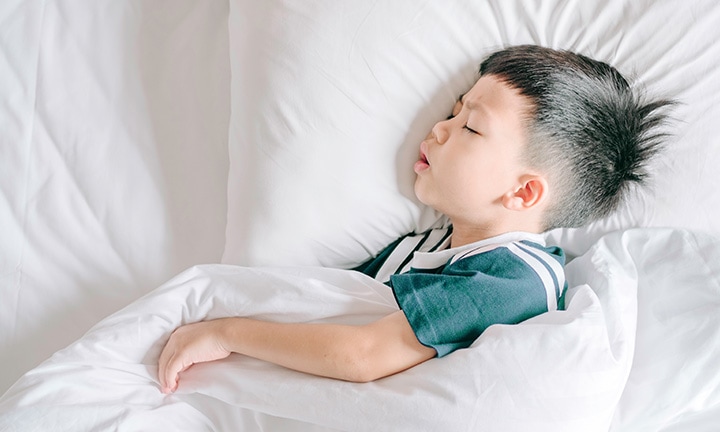How to Prevent and Manage Bedwetting in Children

Bedwetting, also known as nocturnal enuresis, is a common issue affecting many children worldwide. This article aims to provide evidence-based strategies for the prevention and management of bedwetting in children.
By understanding the triggers of bedwetting, establishing a consistent bedtime routine, implementing fluid restriction strategies, utilizing bedwetting alarms, encouraging healthy bathroom habits, and seeking professional help and support, parents and caregivers can effectively address this concern.
The information presented in this article is based on current research and aims to offer practical guidance for managing bedwetting in children.
Key Takeaways
- Understanding bedwetting triggers, such as genetics and bladder capacity, is crucial for effective management.
- Creating a consistent bedtime routine with positive reinforcement techniques can help establish structure and predictability.
- Implementing fluid restriction strategies, such as limiting intake before bedtime and avoiding caffeine, can effectively manage bedwetting.
- Utilizing bedwetting alarms, along with proper placement and maintenance, has been proven effective in reducing bedwetting episodes.
Understanding Bedwetting Triggers
Bedwetting triggers can be better understood through a comprehensive analysis of factors such as genetics, bladder capacity, and sleep patterns. Identifying the causes of bedwetting is crucial for effective prevention and management strategies.
Genetics play a significant role in bedwetting, as studies have shown that children with parents who experienced bedwetting are more likely to develop the condition themselves.
Another important factor is bladder capacity, as children with smaller bladder capacities may be unable to hold urine for extended periods during sleep.
Sleep patterns also contribute to bedwetting, as deep sleepers may have difficulty waking up to the sensation of a full bladder.
Understanding these triggers is essential to address the psychological effects of bedwetting, such as decreased self-esteem and increased anxiety.
Creating a Bedtime Routine
Consistency in routine and positive reinforcement techniques are two key factors in creating an effective bedtime routine for children.
A consistent routine helps children establish a sense of structure and predictability, which can promote better sleep habits.
Positive reinforcement techniques, such as praise and rewards, can be used to encourage and reinforce desired behaviors during the bedtime routine, making it a more positive and enjoyable experience for both children and parents.
Consistency in Routine
Establishing a regular and predictable daily routine has been shown to be effective in managing and preventing bedwetting in children. By establishing patterns and maintaining regularity, children are able to develop a sense of control over their bladder function. This consistency in routine helps to regulate their body’s internal clock, ensuring that they are more likely to wake up to use the bathroom during the night. A study conducted on bedwetting in children found that those who followed a consistent routine were less likely to experience bedwetting episodes compared to those with irregular routines. This highlights the importance of implementing a structured daily routine to manage and prevent bedwetting in children.
| Benefits of Consistency in Routine | ||
|---|---|---|
| 1. Provides structure and stability | 2. Promotes a sense of control | 3. Regulates the body’s internal clock |
| 4. Reduces anxiety and stress | 5. Enhances bladder control |
Positive Reinforcement Techniques
Positive reinforcement techniques have been found to be effective in promoting desired behaviors and increasing motivation in individuals experiencing difficulties with nighttime bladder control. These techniques involve the use of a reward system to encourage children to stay dry throughout the night. Here are four motivation techniques that can be implemented:
- Sticker charts: Create a chart where children can earn stickers for each dry night. Once they accumulate a certain number of stickers, they can receive a small reward.
- Token economy: Give children tokens for dry nights, which they can later exchange for preferred activities or items.
- Verbal praise: Offer verbal encouragement and praise when children wake up dry. This positive reinforcement can boost their motivation and self-esteem.
- Special privileges: Grant special privileges, such as selecting a favorite bedtime story or staying up a little later, as a reward for dry nights.
Implementing Fluid Restriction Strategies
The implementation of fluid restriction strategies has been shown to be effective in managing bedwetting in children. One of the key factors contributing to bedwetting is excessive fluid intake, particularly in the evening. By implementing fluid restriction strategies, parents and caregivers can help reduce the likelihood of nighttime accidents.
It is recommended to limit the child’s fluid intake in the hours leading up to bedtime, especially beverages that have diuretic properties such as caffeine-containing drinks. Additionally, encouraging the child to empty their bladder before going to bed can help reduce the volume of urine produced during sleep.
It is important to note that fluid restriction should be balanced with the child’s hydration needs during the day to ensure overall health and well-being. Overall, incorporating fluid restriction strategies can be a valuable approach in managing bedwetting in children.
Utilizing Bedwetting Alarms
This discussion focuses on the utilization of bedwetting alarms. Specifically, it explores the effectiveness of these alarms through studies conducted in the field.
Additionally, the discussion delves into various alarm usage techniques that have been employed to address bedwetting in children.
Furthermore, the paragraph provides tips for maintaining these alarms to ensure their longevity and optimal performance.
Alarm Effectiveness Studies
Alarm effectiveness studies have demonstrated the efficacy of bedwetting alarms in reducing nocturnal enuresis in children. These studies have provided valuable insights into the benefits of using bedwetting alarms as a treatment option.
The following points summarize the findings of these studies:
- Customization: Bedwetting alarms can be customized to suit the specific needs of each child. This allows for personalized treatment and increases the chances of successful outcomes.
- Effectiveness: Bedwetting alarms have been shown to be an effective intervention for reducing bedwetting episodes. They help children develop the awareness and control necessary to wake up and use the bathroom during the night.
- Long-term results: Studies have indicated that the benefits of using bedwetting alarms can be sustained over time. Continued use of the alarms can lead to long-term improvement in nocturnal enuresis.
- Alternative treatment options: While bedwetting alarms have proven to be effective, it is important to note that there are alternative treatment options available. These include medication, behavioral interventions, and lifestyle modifications. The choice of treatment should be tailored to the individual needs and preferences of the child and their family.
Alarm Usage Techniques
Previous studies have demonstrated the effectiveness of bedwetting alarms in treating nocturnal enuresis. However, the successful usage of these alarms relies not only on their effectiveness but also on proper techniques.
One important aspect is alarm placement. The alarm should be positioned in a way that allows it to detect the first drops of urine, ensuring prompt awakening of the child. Placing the sensor close to the urethra or on the undergarments is recommended.
Additionally, alarm sound levels play a crucial role in waking the child. The sound should be loud enough to wake the child but not excessively loud to cause distress. Finding the appropriate sound level may require some trial and error.
Overall, proper alarm placement and sound level selection are essential techniques for effective alarm usage in the management of bedwetting.
Alarm Maintenance Tips
One important factor in maintaining the effectiveness of bedwetting alarms is regular cleaning and inspection of the sensor and alarm components. By following proper maintenance techniques, the longevity and efficiency of the alarm can be prolonged.
Here are some tips for maintaining bedwetting alarms:
- Clean the sensor regularly: Wipe the sensor with a damp cloth or use a mild detergent to remove any dirt or residue that may affect its sensitivity.
- Inspect the sensor and wires: Check for any signs of damage or wear and tear. Replace any damaged components to ensure accurate detection.
- Test the alarm sound options: Familiarize yourself with the different sound options available on the alarm. This can help determine which sound is most effective in waking the child.
- Troubleshoot any issues: If the alarm is not functioning properly, consult the user manual or contact the manufacturer for troubleshooting guidance.
Encouraging Healthy Bathroom Habits
Promoting regular bathroom routines and emphasizing the importance of adequate hydration can contribute to the development of healthy bathroom habits in children. Establishing a routine for toilet training readiness is crucial in teaching children bladder control. This includes recognizing and responding to the child’s cues for urination and bowel movements, as well as providing them with a comfortable and child-friendly toilet environment. Additionally, educating children about the importance of staying hydrated can help prevent constipation, which can lead to bathroom difficulties. Encouraging children to drink enough water throughout the day can aid in maintaining regular bowel movements and preventing urinary tract infections. By instilling these habits early on, children can develop a healthy relationship with their bathroom routines, promoting optimal bladder control and overall well-being.
| Toilet Training Readiness | Bladder Control |
|---|---|
| Recognizing cues for urination and bowel movements | Maintaining regular bathroom routines |
| Providing a comfortable toilet environment | Encouraging adequate hydration |
| Educating children about the importance of bathroom habits | Promoting regular bowel movements |
Seeking Professional Help and Support
Seeking professional help and support can be beneficial for individuals who are experiencing difficulties with their bathroom habits, as qualified healthcare professionals can provide guidance and interventions to address underlying causes and promote healthy bladder control.
Here are some ways in which professional advice and support groups can assist individuals with their bathroom habits:
- Expert guidance: Healthcare professionals can assess the individual’s condition, identify any underlying medical issues, and recommend appropriate treatments or interventions.
- Tailored interventions: Professionals can develop personalized strategies and interventions to improve bladder control, such as bladder training exercises or medication management.
- Emotional support: Support groups can provide a safe and understanding environment for individuals to share their experiences, receive encouragement, and gain insights from others going through similar challenges.
- Education and resources: Professionals and support groups can provide educational materials, resources, and practical tips to help individuals manage their bathroom habits effectively.
Frequently Asked Questions
Are There Any Natural Remedies or Home Remedies That Can Help Prevent Bedwetting in Children?
Several natural remedies and homeopathic treatments have been suggested for the prevention of bedwetting in children. These remedies aim to address underlying causes such as bladder control issues, anxiety, and dietary factors.
How Long Does It Typically Take for Bedwetting Alarms to Be Effective in Stopping Bedwetting?
The effectiveness of bedwetting alarms in stopping bedwetting varies and is influenced by individual factors. Common causes of bedwetting include delayed maturation of the bladder and genetic predisposition.
Are There Any Medications Available to Treat Bedwetting in Children?
Medication options and behavioral strategies are available to treat bedwetting in children. These interventions aim to address the underlying causes and promote continence. Consultation with a healthcare professional is recommended to determine the most appropriate treatment approach.
Can Bedwetting Be a Sign of an Underlying Medical Condition?
Bedwetting, also known as nocturnal enuresis, can be indicative of an underlying medical condition. Causes and risk factors for bedwetting include physiological immaturity, bladder dysfunction, and genetic predisposition. Bedwetting can also have psychological effects on children.
Is Bedwetting More Common in Boys or Girls?
Bedwetting, also known as nocturnal enuresis, is a common childhood condition. Research suggests that it is more prevalent in boys than girls. Various causes and factors contribute to bedwetting, necessitating the implementation of effective management strategies.









